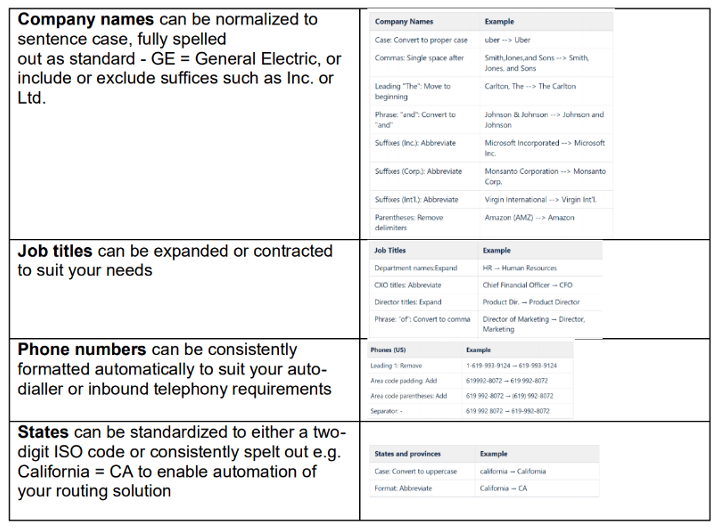
Data cleaning (or data cleansing) is the process of checking your data for correctness, validity, and consistency and fixing it when necessary. No matter what type of data you are handling, its quality is crucial. So it’s better to implement this process into your regular workflow as soon as possible.
What are the specifics of data cleaning, and how can it be implemented? Read on for an overview.
What Is Data Cleaning and What Benefits Does It Provide?
The primary purpose of data cleaning is to correct any invalid, incomplete, duplicate, or false data and bring it to the required format. This is accomplished by replacing, changing, or even deleting some data.
The range of data cleaning usage is quite broad. For example, you may need it to organize the storage of Word documents or clean the logs in the database with Magento headless architecture.
You can accomplish most of the data cleaning work with the help of software (we will talk about this later). However, in most cases, you’ll have to do some of the work manually.
Some of the main benefits that the application of data cleaning techniques provides include:
- Eliminating basic errors and mismatches that are common when obtaining data from different sources
- Increasing the efficiency of business processes by ensuring fast access to the correct data
- Reducing data errors resulting in fewer human mistakes and unsatisfied users
Six Main Ways to Improve Data Quality
1. Setting a Business Case for Strategic Data Cleaning
Poor Data Quality in companies causes the loss of millions of dollars each year. And improving it leads to a more efficient and profitable business. But how do you demonstrate the need for spending resources on data cleaning (both in terms of finances and time)?
Develop a simple yet convincing Data Quality business case. To do this, you should gather the necessary information and, based on it, highlight all the main arguments for implementing data cleaning processes in your company. Plus, estimate the company’s financial losses due to the lack of Data Quality and the current risks. Also, you need to mention what gain the company will get after implementing such strategies.
Business Case Example 1
Suppose your online store has problems with the quality of your customer database (there are mistakes and inaccuracies). Then some orders may not be processed correctly.
It’ll increase your employees’ workload. They’ll have to deal with incorrect orders: contact the buyer, double-check and fix the info, return the wrong order, and send the goods again. This will result in additional expenses.
Business Case Example 2
Let’s assume you have a large online store that’s been on the market for about a decade. Most probably, you’ve started out with, say, 1,000 products, but over the years, you’ve grown to have a database with about 1 million items. Suppose you sell only 20% of the products you have stored, while the rest are disabled or hidden.
If your database architecture is unoptimized and overloaded with useless data, this will negatively influence your store’s performance. This includes both the admin area and the storefront that’s seen by your buyers. Why does this happen? The user requests on the website will take longer to process than needed. And delays in performance lead to abandoned carts, bounce, and lost conversions. Therefore, you can improve the performance by timely cleaning the logs and reorganizing data.
Thus, when making a business case, you need to collect data on incorrect orders or performance delays due to poor Data Quality. You can then give an estimate of the savings the company will receive after implementing a strategy to clear them.
2. Creating a Plan for Improving Data Quality
After you have developed the best business strategy for data cleaning and had it reviewed and approved, it’s time to create a plan to improve Data Quality. It should cover the following points:
- What types of data will be affected
- What are the major quality issues in this data
- What techniques to use for cleansing
- What software you will need
- Allocation of roles and responsibilities
- A clear definition of the KPIs and results to be achieved after data cleaning
There should be a designated person responsible for making and reviewing the plan (the data custodian). The rest of the activities should be divided among designated employees. Review the plan regularly to maintain efficiency and measure performance.
As an example, here is an excerpt from a data cleaning plan used at the World Bank:

3. Standardization During Data Collection
Standardizing data during collection is the easiest method of increasing the consistency and homogeneity of the stored data. Therefore, apply data standards in your organization. For example, fill out data fields in the correct format before adding them to your database.
You can also improve the quality of the data by verifying it as it’s entered (e.g., phone numbers, emails, or credit card info can be verified manually or using software). This will help reduce the volume of incorrect entries and maintain the integrity and usability of the data sets. The screenshot below shows examples of techniques that you can use to standardize data.

4. Selecting Data Cleaning Techniques
Which ways and tactics are worth using to clean up and organize your data? It depends on what types of data you operate and how you optimize your business processes.
Regardless of the specifics mentioned, the fundamental techniques of data cleaning in most cases are the following:
- Deleting irrelevant data
- Getting rid of duplicates
- Avoiding or converting data typos and similar errors
- Creating data standards
- Taking care of missing values
If you need a more in-depth analysis, think through a cleaning strategy for each data set, determining how to improve its quality. To do this, you will need to answer several questions:
- Which fields are the most important for each data set?
- Is it common to have missing fields through your data? What will help solve this problem (adding data, deleting records, etc.)?
- How exactly do data fields need to be formatted?
- How should similar data from different sources be standardized?
5. Cleaning the Data Directly in Cloud Storage
Classic databases use a schema-on-write approach, which makes data cleaning and processing more complex. In contrast, the use of cloud-based solutions for data storage (Dropbox Business, IDrive Team, Egnyte Business, etc.) involves a schema-on-read approach.
Cleaning the data directly in cloud storage simplifies the data cleaning process, as it provides the ability to run it directly in the cloud without the need to move or re-index data – which helps companies to save money and effort.
6. Using Software to Optimize Data Cleaning Processes
Using modern software to automate data cleaning processes will allow your company to reduce costs for these needs and speed up these procedures.
Today, there are many different modern solutions on the market for automating data cleaning:
- Some of them are cloud-based (Xplenty, Informatica Cloud Data Quality);
- Some have to be installed locally (WinPure Clean & Match);
- There are tools that offer a visual data cleaning interface (Tibco Clarity);
- And tools that specialize in CRM (RingLead, Melissa Clean Suite).
All you need to do is to choose the one that is best for you. You can check the list of top 10 tools for improving Data Quality, read more about them, and select the one that suits you best.
The aspects you should pay attention to are the following:
- What features does the tool offer?
- Does it have API connectors to retrieve data from systems directly?
- Is it a visual platform? Does the user need coding skills?
- Does it offer integration capabilities?
- What is the annual cost of use?
Wrapping Up
Making decisions based on high-quality data is a competitive advantage for modern companies, leading to increased profits and better customer service.
Suppose you don’t want to lose vast sums of money annually due to poor Data Quality. In that case, start developing a business strategy for data cleaning, planning how to improve the quality of your data, and investing in automating these processes.
